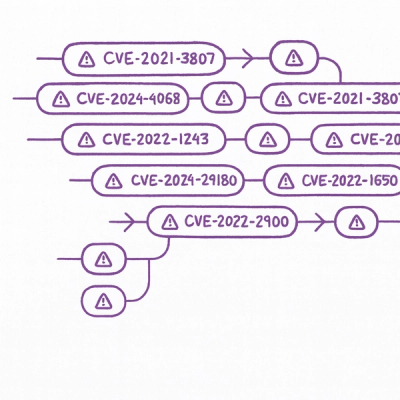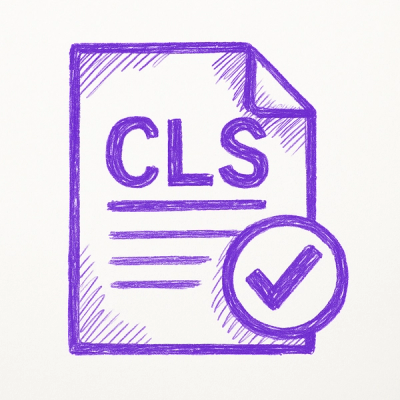
Security News
Astral Launches pyx: A Python-Native Package Registry
Astral unveils pyx, a Python-native package registry in beta, designed to speed installs, enhance security, and integrate deeply with uv.
Object Oriented Keys for Redis.
If you are familiar with databases like Redis and libraries like Ohm you already know how important it is to craft the keys that will hold the data.
>> redis = Redic.new
>> redis.call("HSET", "Event:3", "name", "Redis Meetup")
>> redis.call("HGET", "Event:3", "name")
=> ["Redis Meetup"]
It is a design pattern in key-value databases to use the key to simulate structure, and you can read more about this in the case study for a Twitter clone.
Nest helps you generate those keys by providing chainable namespaces that are already connected to Redis:
>> event = Nest.new("Event")
>> event[3].call("HSET", "name", "Redis Meetup")
>> event[3].call("HGET", "name")
=> ["Redis Meetup"]
Alternatively, you can send the Redis commands as messages to Nest, and if the method definition is missing it will forward the command to Redis:
>> event = Nest.new("Event")
>> event[3].hset("name", "Redis Meetup")
>> event[3].hget("name")
=> ["Redis Meetup"]
To create a new namespace:
>> ns = Nest.new("foo")
=> "foo"
>> ns["bar"]
=> "foo:bar"
>> ns["bar"]["baz"]["qux"]
=> "foo:bar:baz:qux"
And you can use any object as a key, not only strings:
>> ns[:bar][42]
=> "foo:bar:42"
In a more realistic tone, lets assume you are working with Redis and dealing with events:
>> event = Nest.new("Event")
=> "Event"
>> id = event[:id].incr
=> 1
>> event[id].hset("name", "Redis Meetup")
=> 1
>> meetup = event[id]
=> "Event:1"
>> meetup.hget("name")
=> ["Redis Meetup"]
call: Receives a Redis command and its arguments, and returns the
reply from the Redis server. If the reply from Redis is an error,
an instance of RuntimeError is returned.
call!: Similar to call, but instead of returning
an instance of RuntimeError when the command fails, the error is
raised.
queue: Receives the same kind of arguments as call, but enqueues
the command in a transaction.
commit: Commits the transaction and returns the reply from Redis.
Any call to a missing method will result in Nest converting the
method name to a Redis command and applying the arguments in an
invocation to call.
For example:
ns = Nest.new("foo")
ns.append("hello,")
ns.append(" world")
ns.get
Is equivalent to:
ns = Nest.new("foo")
ns.call("APPEND", "hello,")
ns.call("APPEND", " world")
ns.call("GET")
You can supply a Redic instance as a second parameter. If you don't, a default instance is created for you:
>> redis = Redic.new("redis://localhost:6379")
=> #<Redic:0x007fa640845f10 ...>
>> event = Nest.new("Event", redis)
=> "Event"
>> event[:id].call("TYPE")
=> "string"
Nest objects respond to redis and return a Redic instance. It is
automatically reused when you create a new namespace, and you can reuse it when
creating a new instance of Nest:
>> event = Nest.new("Event", meetup.redis)
=> "Event"
Nest allows you to execute all the Redis commands that expect a key as the first parameter. If you use any other command, the result can be unexpected.
redis-namespace wraps Redis and translates the keys back and forth transparently.
Use redis-namespace when you want all your application keys to live in a different scope.
Use Nest when you want to use the keys to represent structure.
Tip: instead of using redis-namespace, it is recommended that you run a
different instance of redis-server. Translating keys back and forth is not
only delicate, but unnecessary and counterproductive.
Ohm lets you map Ruby objects to Redis with little effort. It not only alleviates you from the pain of generating keys for each object, but also helps you when dealing with references between objects.
Use Ohm when you want to use Redis as your database.
Use Nest when mapping objects with Ohm is not possible or overkill.
Tip: Ohm uses Nest internally to deal with keys. Having a good knowledge of Nest will let you extend Ohm to suit your needs.
$ gem install nest
FAQs
Unknown package
We found that nest demonstrated a not healthy version release cadence and project activity because the last version was released a year ago. It has 1 open source maintainer collaborating on the project.
Did you know?

Socket for GitHub automatically highlights issues in each pull request and monitors the health of all your open source dependencies. Discover the contents of your packages and block harmful activity before you install or update your dependencies.

Security News
Astral unveils pyx, a Python-native package registry in beta, designed to speed installs, enhance security, and integrate deeply with uv.

Security News
The Latio podcast explores how static and runtime reachability help teams prioritize exploitable vulnerabilities and streamline AppSec workflows.

Security News
The latest Opengrep releases add Apex scanning, precision rule tuning, and performance gains for open source static code analysis.